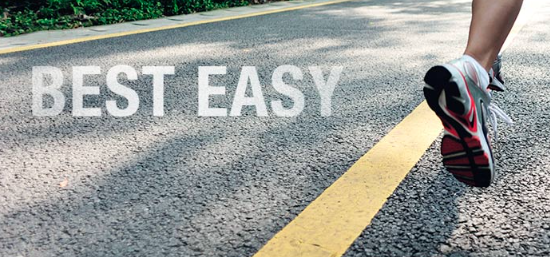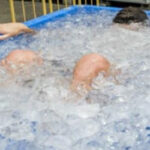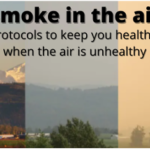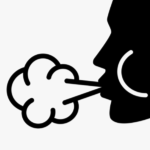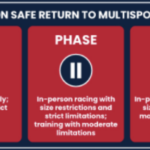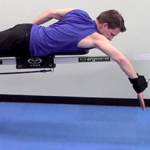Increasing your mileage on the swim, bike and/or run can help improve your performance and race results. Here are seven areas of focus to help you achieve your next level of performance.
How building a strong aerobic base improves performance
By focusing on a base phase of training, you will build a foundation of aerobic fitness. When you build a strong foundation, your body will be better equipped to handle the next level of distance, pace and intensity. The process of working on aerobic fitness improves: oxygen uptake and delivery, recovery, velocity and economy. The base phase can also help reduce injury and training plateaus. Consistent aerobic training builds more mitochondria and slow twitch muscle fibers: these are the fibers that clear lactate when doing harder intensity training in later training phases.
Know yourself as an athlete
Start with a basic assessment of yourself as an athlete. Answering a few quick questions will help direct you to the best plan forward. Training age: what is the cumulative amount of time you’ve spent training for the sport of triathlon? Are you injury prone? What are your strengths and weaknesses? Where do you want to improve? Are you a novice or experienced triathlete? Is your big goal race a short sprint or a longer half or full Ironman?
Durability and resilience on the run
In order to train more, we all need improved durability, but especially if you’re injury prone. The best way to achieve durability is through consistent, year round strength training. This is especially important if running related injuries are a concern. For runners, strength training improves running economy, power, time trial performance and maximal sprint speed. You are also able to run longer at both aerobic and race efforts. You’ll be able to maintain good running form off the bike thus run faster and longer in a fatigued state. Strength training also provides similar benefits for the swim and bike.
Build mileage as aerobic focused base – keep it aerobic
Building a strong mileage base forms the foundation of your training year. During this phase, stay focused on aerobic efforts and frequency of training. When building running mileage, knowing your intensity is very important. It’s very easy to go too hard or too fast and put yourself at risk of injury, burnout and underperformance. In general, using heart rate is the best way to ensure that you stay aerobic (under 80% of maximum HR). This also holds true for the bike and swim. By keeping your mileage build truly aerobic, you can train more frequently, go longer distances, increase weekly mileage and still recover easily. Doing fewer hard workouts during this base phase will actually make you faster in the long run.
Where to start?
Start where you are right now. Build gradually and progressively. On the run and bike, you can safely build your mileage by about 10-20% per week. If you have a strong background in any of the three individual sports, you can initially rebuild your mileage quicker in the first few weeks because of years worth of residual fitness. For the swim, increase distances by at about 5-15% weekly. These increases can be accomplished with longer sessions or increased frequency. Weekly mileage or yardage increases will vary from individual to individual based on your experience and training age in each sport – and your time availability. If you only have 2 days a week that you can make it to the pool, build those two days progressively. You do not need to increase distances or frequency every week. Across the board, stay focused on holding good form for additional miles and frequency.
Single sport focus
One of the complicating factors for triathlon training is balancing your strengths and weaknesses as well as training age in each individual discipline. You will always see greater gains in your overall race performance if you make your weak sport stronger and faster. Don’t neglect that weak link in your chain, but don’t neglect your strengths either.
For example, if you’re a strong swimmer, you can decrease your frequency and duration while adding more training time to your bike or run. Your training mode can be varied across each discipline, e.g. keep more intensity in your swim while focusing on building aerobic duration or miles on the bike or run.
Training intensity when building aerobic volume
In order to maintain some connection to speed, especially if you race short course, it’s important to do some short intervals such as: strides, hill strides, hill running and riding, fast spins, hard gear efforts and short sprints on the swim. Doing these workouts 1-2x/week gives you plenty of recovery without the downside of extended weeks of easy aerobic training.
As with all training planning and phases, be sure to change up the training stimulus every 6-8 weeks. A structured training plan and/or coach can help you navigate all the individual variables specific to your needs and help you reach your best performance.
BIBLIOGRAPHY & RESOURCES
Allen, Hunter, et al. Training & Racing with a Power Meter, Third Edition. Velo Press, 2019.
Daniels, Jack. Daniels’ Running Formula, Third edition. Human Kinetics, 2014.
Nehr, Zach. The science behind building an aerobic base, TrainingPeaks online article.
White, Phil. Polarized vs Pyramidal Training – Which is better for your athletes? TrainingPeaks Coach Blog: November 2022.
